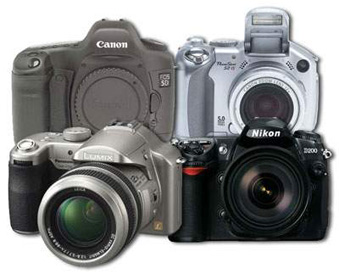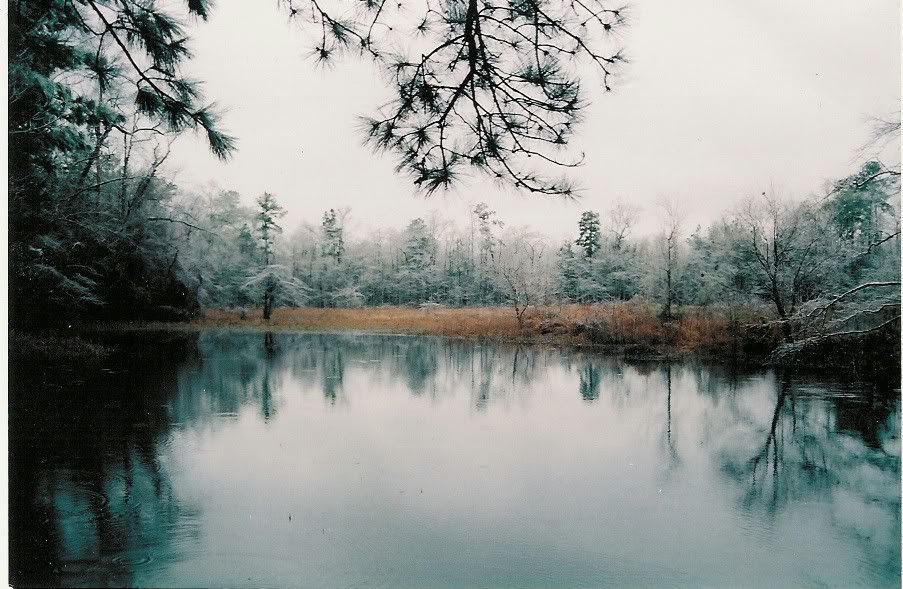

 The Accurate Reloading Forums
The Accurate Reloading Forums  THE ACCURATE RELOADING.COM FORUMS
THE ACCURATE RELOADING.COM FORUMS  Computers, Hi-Tech & Product Reviews
Computers, Hi-Tech & Product Reviews  Practical Photography For Hunters
Practical Photography For Hunters  Digital vs Film -- DL Warning:big File
Digital vs Film -- DL Warning:big FileGo  | New  | Find  | Notify  | Tools  | Reply  |  |
| one of us |
This image of a friend's lab was shot with a Canon 30D and 75-300 IS lens as an in-camera RAW image, then saved as a 300 dpi TIF. Original TIF size 4800x7200 (16"x24")42.8 MB. The image below is still at 16"x24" (1152x1728) but saved from the TIF as a JPG at 72dpi. File size is only 1.4MB.  Tony Mandile - Author "How To Hunt Coues Deer" | ||
|
| One of Us |
I just bought a Nikon D90 and have everything to learn about digital. From the above example I conclude that it's a good idea to shoot with RAW file, as well I suppose as a jpeg file, since that's what my camera can offer as options. But is there any reason not to go for the largest size image and the finest definition in jpeg? I have three choices in pixels and three choices in size. Is there any reason not to always shoot the biggest and finest, other than the size of the file? _________________________________ AR, where the hopeless, hysterical hypochondriacs of history become the nattering nabobs of negativisim. | |||
|
| one of us |
Wink, There is really no reason to shoot both RAW and JPG. That just unnecessarily eats up your memory card. You can easily save the RAW image in any size or resolution to a JPG at any time after you UL it to your computer. Consider the RAW file as your master image. You can make any enhancements to it and even save it as a RAW image under the same name. The changes you make to a RAW image, unlike a JPG, are almost like making changes in the camera when you shoot the photo, such as exposure compensation, white balance etc. But then you can always revert back to the original at any time with a simple click, thus removing any of the changes you had made. Now, that said, the file format you use in camera will depend on what you want the images for. The FINE quality JPGs from a large mp camera work quite well for printing up to 11'x14". Even the 1.5 mb image at 72 dpi of the yellow lab (above) will print well at that size, but I would probably convert my RAW to use a 300 dpi JPG. Still, RAW is the best option to shoot because you can always produce a lesser quality image; you can't do the opposite, however. Until I bought my Canon 30D, I was using an OLY 2100Z for digital pix. The biggest file was 1.3 mp!! Yet, I have had several full-page images and two-page spreads published from it, and they turned out super. The one below is a smaller, very compressed version of my guide with my tahr in NZ that I took with the 1.3mp OLY a few years ago at the best JPG setting. It will likely appear in an article I'm working on right now for Texas Sporting Journal.  Tony Mandile - Author "How To Hunt Coues Deer" | |||
|
| One of Us |
Resizing algorithms are better nowadays. But they still can't beat a mechanical resize. Consider if your final use of the photo is going to for sure be reduced size. If it is than shoot it that size up front. My wife takes lots of real estate photos that must be uploaded. Typically 800x600 jpgs is all they will allow. On man made structures with straight lines in them resize algorithms will often cause artifacting. This gives what should be a straight line a jagged appearance. It makes shingles and siding look sloppy after you resize. If you shoot the photo directly to 800x600 then there is no problem. JPGs have a cumulative compressive effect. Every time you save it, it gets re-compressed. Do all your editing at once or work in tif or bmp format until you have the photo the way you want it. | |||
|
| one of us |
If you want to try useing RAW you'll need an editing program. you can download these ... http://www.gimp.org/ and http://ufraw.sourceforge.net/ They are good and free. "When doing battle, seek a quick victory." | |||
|
| one of us |
I'm not sure about Nikon, but my 30D came with Canon software that does a pretty decent job for most of the editing on its own RAW images. I haven't yet uploaded the software for my new Panasonic P&S that also has a RAW option available, but I'm guessing it will have the edit functions, too. Last I checked, the newer versions of PS also has plug-ins available for the various camera brands. Tony Mandile - Author "How To Hunt Coues Deer" | |||
|
| one of us |
Ah ha .. checking what's on the disk, that's a good idea. Truly awesome pics on the other thread, I love the one of the small cat BEAUTIFUL. "When doing battle, seek a quick victory." | |||
|
| One of Us |
After looking at some of Outdoor Writers pictures, and some of the others too I may have to finally make the move to digital. The resolution is just incredible in the pic of the lab. I've been using cameras of a technology from a time long ago. My favorite photography is outdoor existing light. My current camera battery consists of a pair of Pentax K1000 manual bodies in 35mm with the usual lenses from 35mm to 210mm with a 2x teleconverter to help with shots that are a bit far. Told you it was old stuff, but I did buy one of them new I believe back in '89 and the spare later. These have been a great introduction but again I think it is time to update some. But since this is a thread concerning "Digital vs Film" I'll post a pic I took behind my house. Rodney. Winter 2006  | |||
|
| one of us |
I had that pic of the Lab showing on my big screen when my girlfriend walked in and took a double take, she said. "That looks so real, I thought there was a dog in the room." "When doing battle, seek a quick victory." | |||
|
| one of us |
I do love RAW. I don't shoot in any other format.  Doug Humbarger NRA Life member Tonkin Gulf Yacht Club 72'73. Yankee Station Try to look unimportant. Your enemy might be low on ammo. | |||
|
| One of Us |
More on the advantages of RAW... A RAW file is the data obtained directly from the camera's digital sensor at the time of a shot. This data is exactly as the sensor saw it, with no downsampling, no conversion, no adjustments, no compression, no filtering of any kind. When you save to another file format (jpeg, tiff, etc.) this raw sensor data is first converted to pixel data. Note that pixel data is not the same thing as sensor data. Pixel data is derived from sensor data using fairly complex (and proprietary) algorithms. The camera manufacturers allow you to alter how these algorithms function by changing a limited number of settings (eg - ISO, white point, etc.) in your camera, but only at the time of the shot. Most of the settings are automatically determined or hard-coded into the firmware of the camera. For non-RAW files, the pixel data is then optionally sized, optionally compressed, and then saved to the file. The original sensor data is thrown away. Sizing, and compression (jpeg) also result in lost pixel data. The biggest advantage to RAW files is that no data is lost to pixel conversion, sizing or compression. It's all still there. You can use your PC (and a large variety of software) to reprocess raw sensor data into pixel data any way, and any time you want. It is far more effective (better results) to do most types of image transforms (eg - exposure, sharpening, etc.) on the raw sensor data than it is to do the same types of transforms on pre-processed pixel data. Other advantages are that you can control many many parameters of the pixel conversion that the cameras do not make available. You can take advantage of image processing advances in the future. You can make as many non-RAW files in any size (limited by the size of your sensor) you want. etc. etc. -nosualc Beware the fury of an aroused democracy. -Ike | |||
|
| Powered by Social Strata |
| Please Wait. Your request is being processed... |
|
 The Accurate Reloading Forums
The Accurate Reloading Forums  THE ACCURATE RELOADING.COM FORUMS
THE ACCURATE RELOADING.COM FORUMS  Computers, Hi-Tech & Product Reviews
Computers, Hi-Tech & Product Reviews  Practical Photography For Hunters
Practical Photography For Hunters  Digital vs Film -- DL Warning:big File
Digital vs Film -- DL Warning:big File

Visit our on-line store for AR Memorabilia

